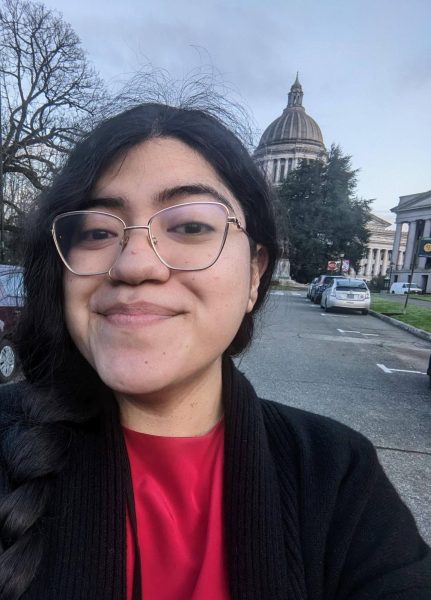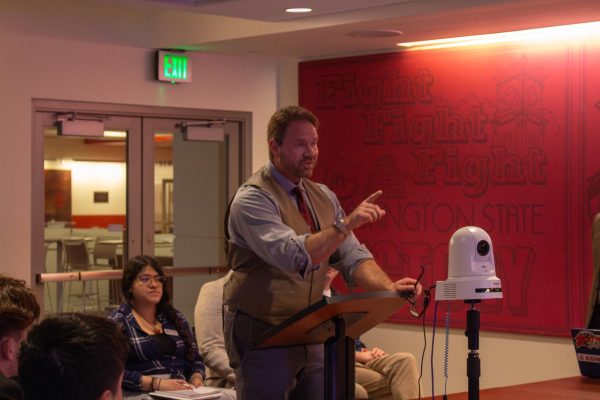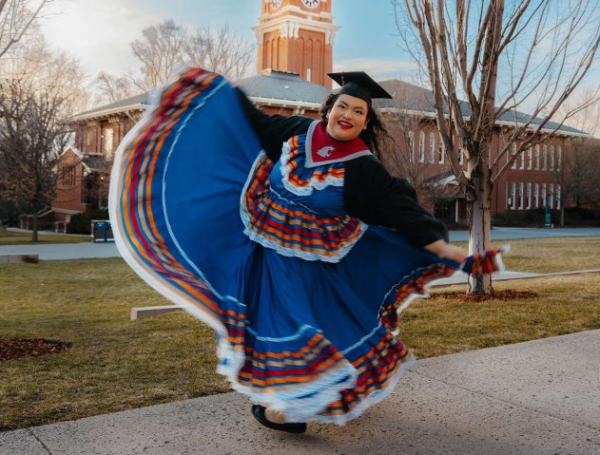New exhibit showcases Native American art
Oregon-based art institute features weaving, beading
STEPHEN MURNANE | THE DAILY EVERGREEN
Crow’s Shadow founder James Lavadour, left, and two professors, discuss artistic backgrounds and the history of Crow’s Shadow on Thursday night in the Jordan Schnitzer Museum of Art.
September 28, 2018
The Jordan Schnitzer Museum of Art recently began to feature art from Crow’s Shadow Institute of the Arts to celebrate the first 25 years of CSIA, now in its 26th year.
“Crow’s Shadow’s mission is to provide social, economic and educational opportunities to Native Americans through artistic development,” James Lavadour, co-founder of CSIA and artist, said.
CSIA is on the Umatilla Indian Reservation in Oregon and tries to teach indigenous people more about their culture through art.
The organization focuses on printmaking, but also has workshops on subjects such as weaving or beading.
Printmaking requires collaboration because the artists do not roll their own print unless they are a printmaker. The master printmaker rolls the print, Rebecca Dobkins, curator of Willamette University’s Hallie Ford Museum of Art, said.
Printmaking requires a surface, which can be paper, etching the image in reverse and then printing the paper, Dobkins said.
Each time the printmaker rolls the print, they are adding only one layer of color, so the process must be repeated to add multiple colors.
“When I started printmaking, it was excruciating because it’s a process,” Lavadour said. “But once I learned how to do it, it was liberating.”
Dobkins curated the exhibition shown at the Jordan Schnitzer Museum of Art. She is well-acquainted with CSIA because HFMA has an archive of all CSIA’s work.
“We wanted to represent every artist who had been in residence [for two weeks] at Crow’s Shadow,” Dobkins said.
Many of the artists at CSIA come and go. There were only 50 artists who had been invited for two weeks, she said. There is at least one piece of art shown for each of the 50 artists.
“We wanted to really show the breadth of the work,” Dobkins said.
The Jordan Schnitzer Museum of Art is displaying this exhibition through Dec. 22.





















